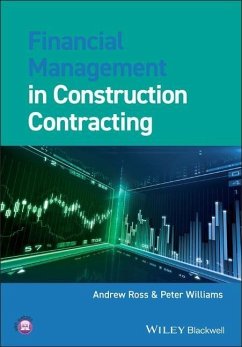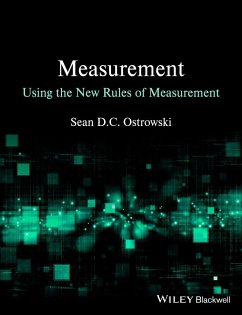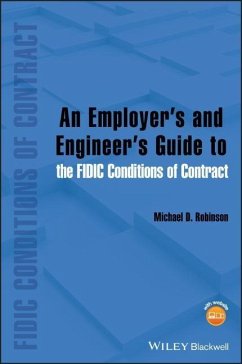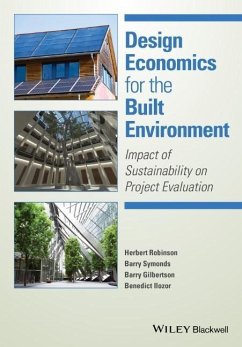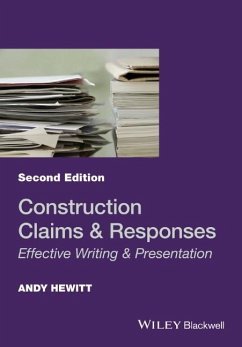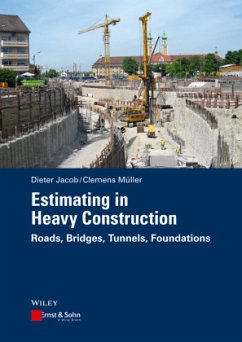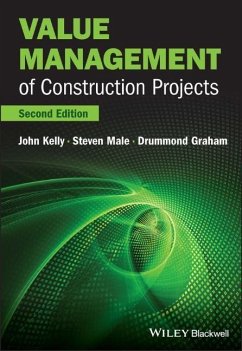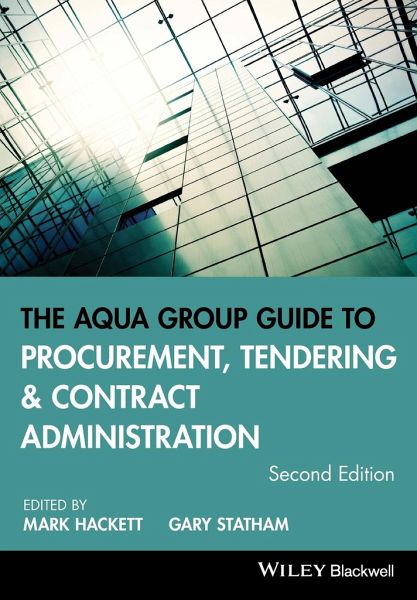
The Aqua Group Guide to Procurement, Tendering and Contract Administration
Versandkostenfrei!
Versandfertig in 2-4 Wochen
55,99 €
inkl. MwSt.
Weitere Ausgaben:

PAYBACK Punkte
28 °P sammeln!
Updated edition of a key text for the building team.This authoritative guide gives a detailed account of the building team s roles and responsibilities, with best industry practice required to ensure that building projects meet clients expectations on time, cost and quality.The period from starting a college course to successful completion of professional examinations represents a long and steep learning curve. The range of skills and the knowledge required to perform work efficiently and effectively might, at first, seem rather daunting. This guide will provide you with sufficient understandi...
Updated edition of a key text for the building team.
This authoritative guide gives a detailed account of the building team s roles and responsibilities, with best industry practice required to ensure that building projects meet clients expectations on time, cost and quality.
The period from starting a college course to successful completion of professional examinations represents a long and steep learning curve. The range of skills and the knowledge required to perform work efficiently and effectively might, at first, seem rather daunting. This guide will provide you with sufficient understanding and hold you in good stead for your early years in professional practice.
The Aqua Group Guide to Procurement, Tendering and Contract Administration is the merging of three established textbooks written by the Aqua Group - a highly respected group of architects and quantity surveyors. It has been edited, enlarged and updated into a single volume by Davis Langdon and now covers the entire building process from inception through to final account.
With clear and thorough explanations by practising professionals from this distinguished practice, you are taken through self-contained chapters covering the detail of the briefing stage, procurement methods, tendering procedures, and contract administration.
Throughout, the emphasis is on current best practice and the book draws from the widely used Joint Contracts Tribunal (JCT) series of contracts.
From the reviews of previous editions:
' These publications by the Aqua Group are absolutely essential reading for the young architect, civil engineer and QS. Chartered Quantity Surveyor
' This is a good concise book for members of the building team.
The Architects Journal
' The Aqua Group Guide... provides a comprehensive account of the systems, procedures, documents and industry practices encountered during construction projects. The guide also captures and contains the level of understanding that one is expected to have acquired in order to pass professional examinations and, therefore, provides a good grounding to a successful career in the construction industry. '
From the Foreword by Rob Smith, Senior Partner, Davis Langdon LLP
- glues together all the different aspects of running building projects into chronological order
- matches modules on QS courses and covers all stages in the process, from inception to final account
- Authors have a broad range of experience in private and public sector, and in teaching Part of a well-established line of Aqua books - running for 50+ years
This authoritative guide gives a detailed account of the building team s roles and responsibilities, with best industry practice required to ensure that building projects meet clients expectations on time, cost and quality.
The period from starting a college course to successful completion of professional examinations represents a long and steep learning curve. The range of skills and the knowledge required to perform work efficiently and effectively might, at first, seem rather daunting. This guide will provide you with sufficient understanding and hold you in good stead for your early years in professional practice.
The Aqua Group Guide to Procurement, Tendering and Contract Administration is the merging of three established textbooks written by the Aqua Group - a highly respected group of architects and quantity surveyors. It has been edited, enlarged and updated into a single volume by Davis Langdon and now covers the entire building process from inception through to final account.
With clear and thorough explanations by practising professionals from this distinguished practice, you are taken through self-contained chapters covering the detail of the briefing stage, procurement methods, tendering procedures, and contract administration.
Throughout, the emphasis is on current best practice and the book draws from the widely used Joint Contracts Tribunal (JCT) series of contracts.
From the reviews of previous editions:
' These publications by the Aqua Group are absolutely essential reading for the young architect, civil engineer and QS. Chartered Quantity Surveyor
' This is a good concise book for members of the building team.
The Architects Journal
' The Aqua Group Guide... provides a comprehensive account of the systems, procedures, documents and industry practices encountered during construction projects. The guide also captures and contains the level of understanding that one is expected to have acquired in order to pass professional examinations and, therefore, provides a good grounding to a successful career in the construction industry. '
From the Foreword by Rob Smith, Senior Partner, Davis Langdon LLP
- glues together all the different aspects of running building projects into chronological order
- matches modules on QS courses and covers all stages in the process, from inception to final account
- Authors have a broad range of experience in private and public sector, and in teaching Part of a well-established line of Aqua books - running for 50+ years




